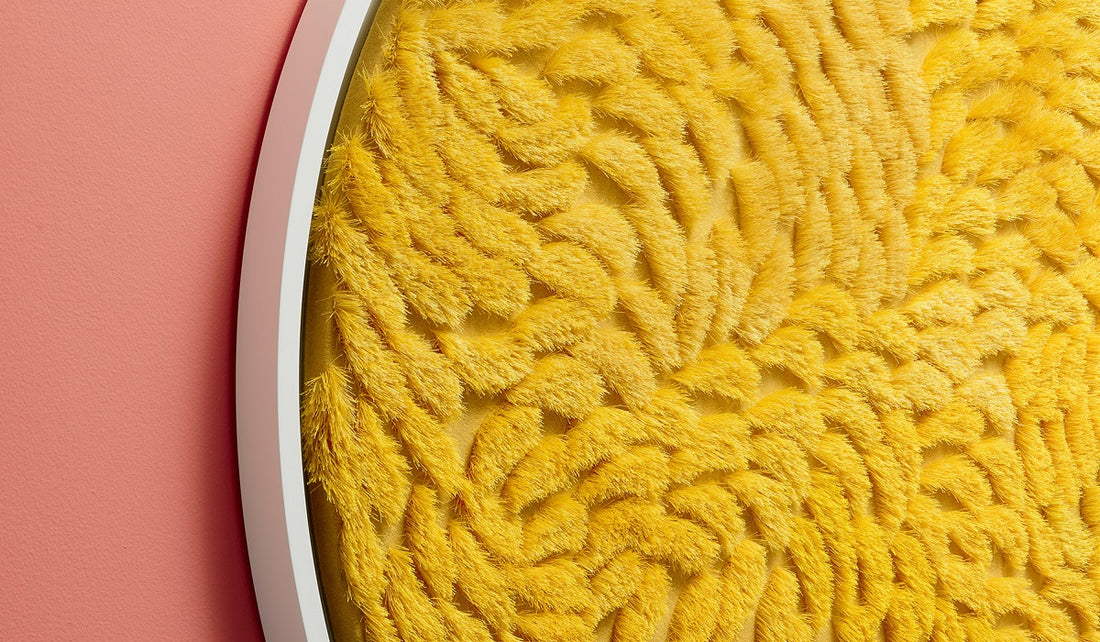
Tactile Textiles

Photography credit: Article Studio.
Textile artist and designer Anna Gravelle is proof that you can change careers and dive into a creative practice at any age. Born in Wales, but now living and working in Bristol, Anna studied Fine Art and worked in TV before jumping ship in her 40’s to seek a new career in textiles.
“I yearned to make with my hands again, and felt certain that textile was the material I wanted to work with. After a brief but incredibly exciting introduction to textile printing at Central Saint Martins I threw caution to the wind, handed in my notice to the BBC, and enrolled on an MA in Textile Design at Bath Spa University.”

Photography Credit: Yeshen Venema.
Anna’s fabric designs are textural and 3D. An engagement with materials and the process of making is what drives her design practice. The work is designed in response to Anna’s fascination with textural landscapes and interpreting them through drawing, photography and mark making into stitch and print. She employs traditional and contemporary processes - wet print, digital print, laser-etching, machine and hand embroidery.
“I am perhaps best known for taking the craft of tufting, using its potential for adding a tactile and three-dimensional character to the textiles I make. The Venor Tufting machine I use is British-made but now obsolete. I discovered the machine while studying for my MA in Textile Design. Alongside my creative developments in textile design I researched the tufting machine's technical possibilities and restrictions.”
Tufting is a technique most will associate with candlewick bedspreads and rug making. Candlewick bedspreads were produced using a cotton base cloth and thick chenille yarn. The bedspreads were then machine washed to shrink the fabric around the yarn to improve its stability.

Photography credit: Article Studio.
“What I wanted to explore was using finer yarns and threads to produce a more sophisticated and contemporary finish. I hit upon my favourite aesthetic result in the form of melton wool and polyester sewing thread. The polyester retains its rigidity and the melton wool repairs itself around the piercing machine needle. I am asking the machine to perform in a way that it isn't designed to do. Working on the reverse of the fabric I mark out the design, which I then use as a guide for my stitching. The joy is when the fabric is turned over at the end of a session to reveal all the threads standing proudly.”
You can find out more about Anna’s work by visiting her website.
All image credits are courtesy of the artist.
A guest post written by graphic designer and illustrator Laura Heeks.
